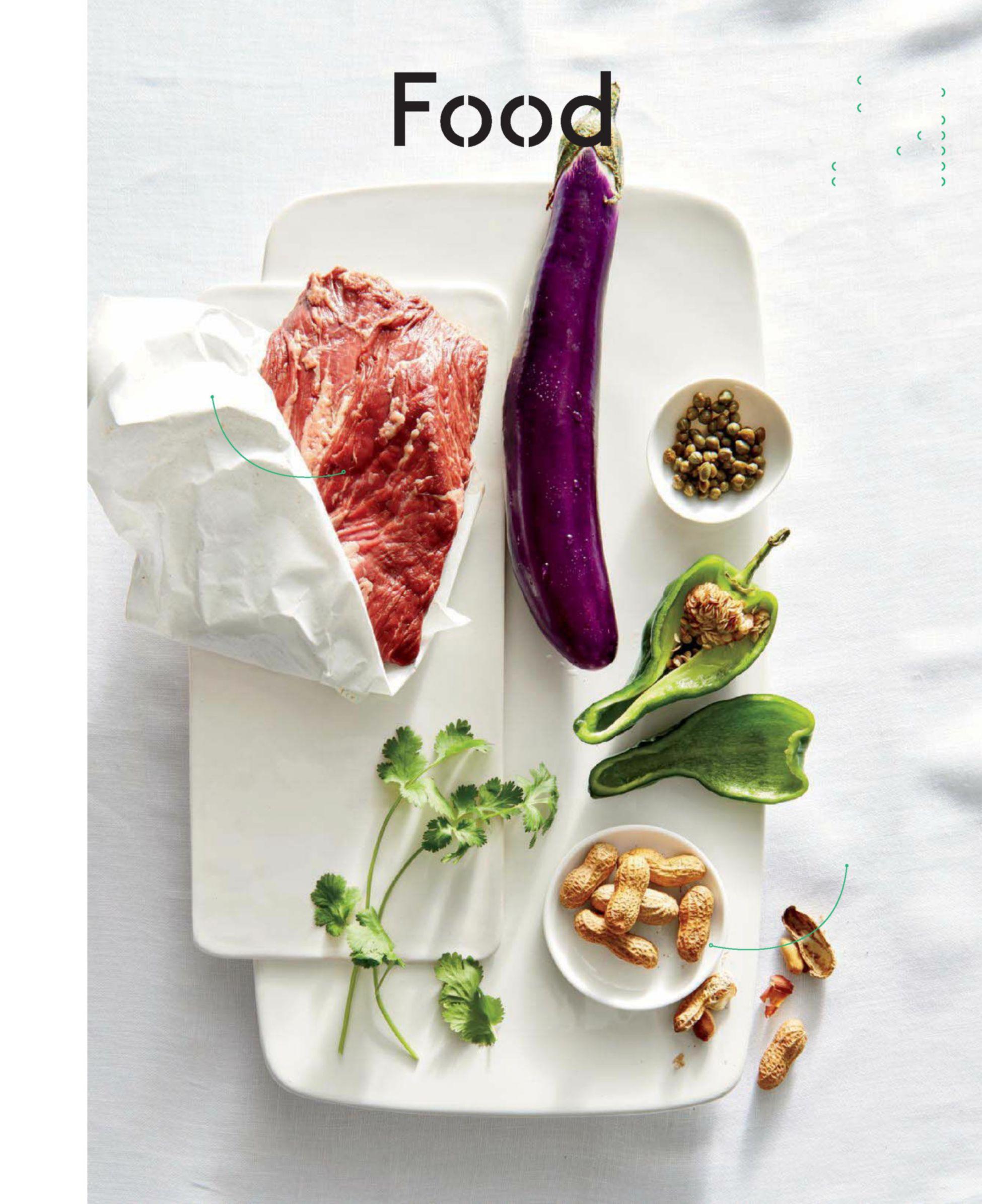
3 minute read
REAL SIMPLIFIER
REAL SIMPLIFIER
Restaurant menus
Advertisement
When you’redeciding what to order, there’s a lot more at play than whether youfeel like chicken or fish. Restaurant consultant AaronAllen dishes on the subtle psychology feeding yourdecision.
Does menu design really make a difference in what we order? Yes. Restaurant owners use tactics to emphasize certain items—think highmargin items and signature dishes—over others.
What kinds of tactics? Research has found that people’s eyes naturally stop at specific spots on the menu, so restaurants place highly profitable items in these locations.
Break it down for us. With a folded menu, the eyes go to the middle, to the top right, to the top left—known as the “golden triangle.” When a menu is one page, eyes go middle, top, bottom. Within any section of the menu, most diners order one of the first two items listed. Some tend to pick the last item—that’s usually the restaurant’s third most cost-effective dish.
Any other tricks we should know? We’re conditioned to notice what’s different.
Written by Yolanda Wikiel Illustration by Peter Oumanski
Any item set off with white space, a color, or a bold font will grab attention.
Price influences your decision, though. Yes. But many restaurants leave off dollar signs so you aren’t reminded that you’re paying for the experience. Menus may also list prices directly after the description, where they’re less noticeable. Look out for prices written in letters—that can lead you to spend 30 percent more. Then there are items I call “decoy dishes.” A menu may tout a $50 Kobe burger—not many folks will order that—but it serves to make everything else look inexpensive.
Is a prix fixe menu a deal? Only if you want all those dishes. Otherwise you’re being upsold to an appetizer and a dessert you wouldn’t have ordered.
And ordering à la carte? It’s another form of pricing psychology. For example, the check may be more at a sushi place than at other restaurants, but it won’t feel that way while ordering, since each piece costs $3. Same goes for a glass of wine versus a bottle. You feel better about it at the start, even if you spend more in the end.
What should we know about the drinks list? Some restaurants may list foreign-sounding wines by the number so diners won’t feel intimidated ordering a fancier option. As for cocktails, they offer the biggest profit for the restaurant, and cutesy drink names help sales.
Is it true what they say about “today’s specials” being not so special? Sometimes, yes, yesterday’s halibut becomes today’s bouillabaisse. But not always. A chef could be serving produce at its peak or trying out something new.
What effect does the dish description have? Adjectives feed the imagination. Likewise, words that inspire nostalgia—”Grandma’s Apple Pie”—are meant to appeal to your emotions. You’ll also see the word fresh used a lot. Consumers think they want to eat healthy, but the word healthy hints that it may not taste good. Fresh implies that’s it’s better for you and it tastes good.
Do foodie terms work the same way? Buzzwords—free range, line caught,local—can justify a higher price in our minds. The restaurant may even trace the grouper back to who caught the fish, on what boat, and on what body of water.
Anything else we should be aware of? The digital menu boards atsome fast-casual places can increase the bill by 10 percent or more.
Why? The upsell is built in. Being asked what type of tequila you’d like in your margarita may not happen with the waitstaff, but here the add-on is always offered.And because it’s so convenient, the consumer sometimes goes for it.
ORDER WINE LIKE A PRO Learn more at real simple.com/winelist.










